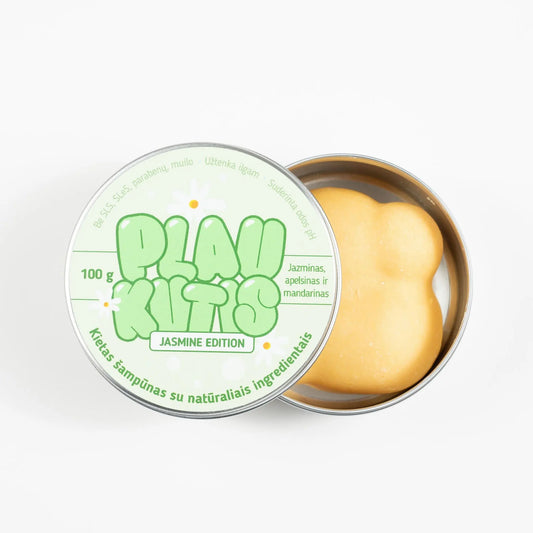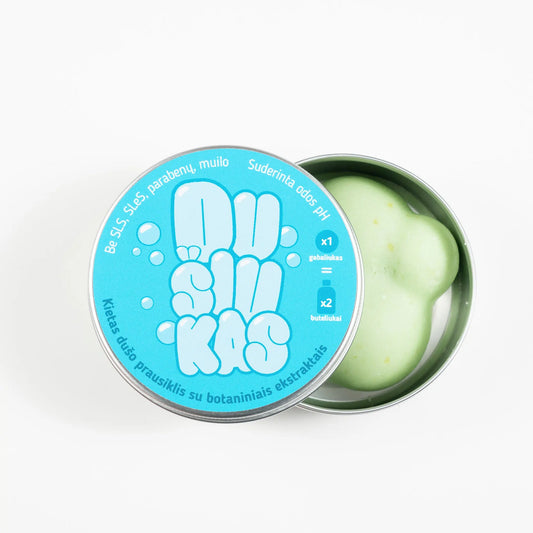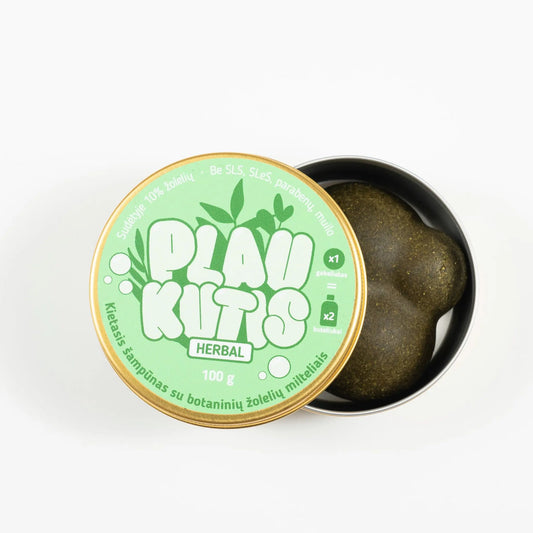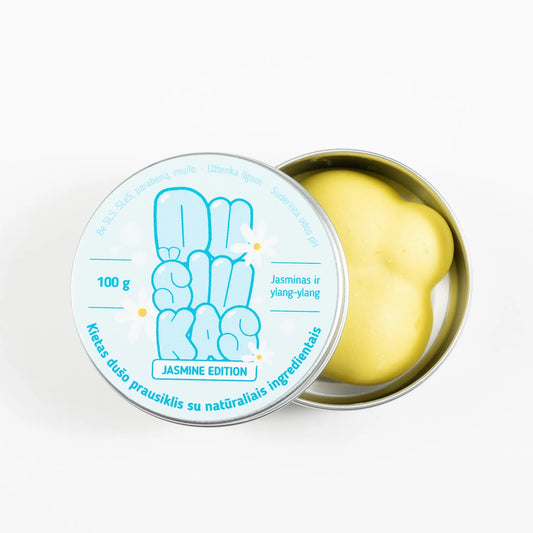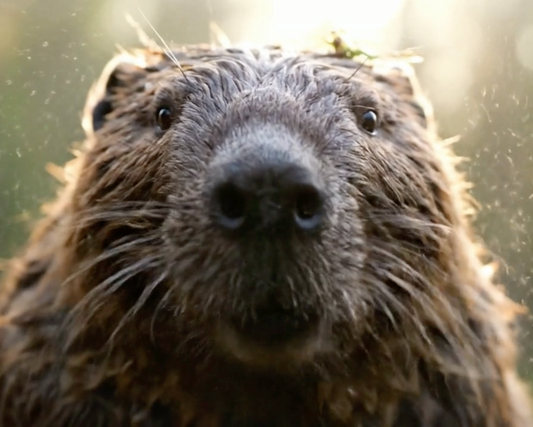Why does a product that's perfect for your girlfriend leave your hair limp and lifeless? The secret lies in your hair type! Hair care is not the same for everyone. Your hair texture, type and needs determine which products and routine work best for you. To keep your hair healthy, shiny and vibrant, it's essential to understand your hair type and choose the right care routine.
In this article, we'll look at different hair types—straight, wavy, curly, and coily—and textures ranging from fine to thick. We'll also give you some helpful tips on how to identify your hair type and tailor your care routine to achieve amazing results.
Understanding hair types
Hair type is determined by the shape of the hair follicle. Round follicles produce straight hair, while oval or twisted follicles produce wavy, curly, or coily hair. Additionally, each hair type has a different texture: fine, medium, or thick. Understanding your hair type and texture is key to choosing the right care routine.
Let's delve deeper into different hair types and textures, examining their characteristics and best care practices.
1. Straight hair: smooth and shiny
Characteristics : Straight hair, also known as type 1, has no natural curl. It falls smoothly from root to tip and is often shiny because natural oils move easily through the hair strands. Straight hair can be:
- Thin : Thin strands that can quickly look limp or greasy. They are often soft but may lack volume.
- Medium : Thicker than fine hair, has more volume. Holds style better and is less prone to greasiness.
- Thick : Strong, strong strands that are more resistant to breakage. They may look heavy, but they can also be prone to frizz.
Common problems : Straight hair, especially fine hair, tends to get greasy more quickly. It can also look limp or lifeless.
Straight hair care tips :
- Use a light, volumizing shampoo to avoid weighing down your hair.
- For fine hair, avoid heavy conditioners. Opt for a lightweight, leave-in conditioner that is applied only to the ends.
- Use dry shampoo between washes to control oiliness and add volume.
- When styling, use a product to lift the roots. Avoid using too much styling product on fine hair as it can make it look greasy.
2. Wavy hair: natural waves and texture
Characteristics : Wavy hair (type 2) has a natural wave or "S" shape. It falls between straight and curly hair, and can range from light, beachy waves to more pronounced waves. Wavy hair can be:
- Thin : Light waves with a slight bend. They may need help to define the waves more clearly.
- Medium : Thicker strands with more defined waves. Holds shape better and has natural volume.
- Thick : Strong, distinct waves that can be prone to tangles and tangles.
Common problems : Frizz, poor wave definition, and root fragility.
Tips for caring for wavy hair :
- Use a sulfate-free shampoo that moisturizes to prevent frizz and dryness.
- Apply a light conditioner, focusing on the mid-lengths to the ends of your hair.
- Use a curl-enhancing mousse or lightweight gel to define your waves. Gently press your hair to enhance its natural shape.
- Let your hair dry naturally. If you use a hair dryer, use a diffuser to reduce frizz and improve wave quality.
3. Curly hair: full of volume and personality
Characteristics : Curly hair (type 3) forms spiral curls that range from loose to tighter ringlets. Curly hair is often drier because natural oils have a hard time moving down the spiral strands. It can be:
- Fine : Fine, soft curls that are easy to overload with products.
- Medium : Fuller curls that hold their shape but can be prone to frizz and breakage.
- Thick : Strong curls that are more resistant to styling but may require additional moisture.
Common problems : Dryness, frizz, and poor curl definition.
Curly hair care tips :
- Wash with a sulfate-free shampoo that moisturizes and preserves natural oils.
- Use a deep conditioner regularly to lock in moisture. Apply conditioner liberally to each curl, especially the ends.
- Use a leave-in conditioner or curl cream to define curls. Avoid touching your hair while it's drying to reduce frizz.
- Allow hair to air dry or use a diffuser on low heat. Gently push curls upwards to add volume.
4. Spiral Curly Hair: Bold and Gorgeous
Characteristics : Spiral curly hair (type 4) is the most textured of all hair types. It forms strong spiral, zigzag, or curl patterns. This hair is usually very dry and brittle due to its tightly coiled structure. It can be:
- Thin : Thin, fragile spirals that are prone to breaking.
- Medium : Fuller spirals that hold their shape well.
- Thick : Strong, dense spirals that require special hydration and care.
Common problems : Breakage, dryness, and shrinkage (hair looks shorter due to tight curls).
Tips for caring for spirally curly hair :
- Wash your hair with a sulfate-free shampoo that is intensely moisturizing. Use conditioner instead of shampoo (co-washing) to lock in moisture.
- Always use a rich, deeply moisturizing conditioner. Apply it in sections to ensure every strand is covered.
- Comb damp hair with a wide-tooth comb while it is coated with conditioner to reduce breakage.
- Use the LOC method (leave-in conditioner, oil, cream) to lock in moisture. Opt for heavier creams and oils for maximum moisture.
How to determine your hair type
Determining your hair type can be tricky, but it's crucial for choosing the right products and care routine. Here's how to identify your hair type and texture:
1. Check your curl pattern :
- Wash your hair with a sulfate-free shampoo and let it dry naturally without any products.
- Observe the natural shape of your hair. If it dries straight without any curls, your hair is straight. If it forms loose waves, your hair is wavy. If it creates definite curls or spirals, your hair is curly. Tight spirals indicate spirally curly hair.
2. Estimate the thickness of the strand :
- Take one strand of hair and rub it between your fingers.
- If you can barely feel the strand, your hair is thin. If you can feel it strongly, it's thick hair. Medium hair is somewhere in between.
3. Evaluate the behavior of the hair :
- Does it get greasy quickly? You probably have thin hair.
- Does it tangle or tangle easily? This indicates curly or spiral-curled hair.
- Is it hard to maintain your hairstyle? You probably have straight hair.
Understanding these factors will help you tailor your hair care routine more effectively.
Myth busting: hair types and care
-
Myth: Thin hair doesn't need conditioner .
- Truth : All hair types need moisture. For fine hair, use a light conditioner to avoid weighing it down.
-
Myth: Hair type cannot be changed .
- Truth : While you can't change your natural hair type, you can style it differently. For example, straightening curly hair to achieve smoothness.
-
Myth: Oily hair doesn't need oils .
- Truth : Natural oils like argan oil can nourish your hair without making it greasy. Apply only to the ends for best results.
-
Myth: Spirally curly hair grows slowly .
- Truth : Spiral curly hair grows at the same rate as other types. However, receding hairline can give the impression of being shorter.
-
Myth: More shampoo means cleaner hair .
- Truth : Too much shampoo can strip your hair of its natural oils, especially for curly and coily hair. A coin-sized amount is often enough.
Practical hair care tips for every hair type
- Straight hair : Avoid washing too often. Use dry shampoo to refresh your hair and add volume between washes.
- Wavy hair : Use leave-in conditioners or lightweight styling creams to enhance natural waves. Avoid combing dry hair; use a wide-toothed comb.
- Curly hair : Use a microfiber towel or cotton t-shirt to dry your hair and reduce frizz. Deep condition once a week.
- Spiral-curly hair : Protective hairstyles like braids or twists can reduce breakage. Use oils or butters regularly to lock in moisture.
Frequently asked questions about hair types
-
Can my hair type change over time?
- Yes! Hormones, age, and lifestyle changes can affect hair texture and curl pattern.
-
How often should I wash my hair?
- It depends on your hair type. Fine or oily hair may require washing every 2-3 days, while curly or coily hair is best washed once a week.
-
How to add volume to thin, straight hair?
- Use a volumizing shampoo and dry shampoo. Blow dry your hair upside down to add lift.
-
Why is my wavy hair frizzy?
- Wavy hair is prone to frizz due to its natural curls. Use sulfate-free shampoos and conditioners and frizz-control serums to maintain smoothness.
-
How to maintain moisture in spiral curly hair?
- Try the LOC method (leave-in conditioner, oil, cream) to lock in moisture. Avoid frequent washing; using conditioners instead of shampoo (co-washing) is your friend.
Conclusion
Your hair type is unique, and so are its needs. Understanding whether your hair is straight, wavy, curly, or coily—and determining its texture—can help you tailor your hair care routine for the best results. Remember, the right products and techniques can do wonders for taking your hair from ordinary to gorgeous.
Do you have any tips or want to share your hair care experiences? Join the conversation in the comments!
